Holding the largest collection of works by Portuguese-British artist Paula Rego, Kim Manocherian has been building her Scheherazade Collection for over 40 years.
 |
|---|
| THE TALKS | 13 November 2024 |
|---|
| Collecting Art Is Healing for Me |
|---|
|
|---|
| Kim Manocherian |
|---|
| / |
|---|
| New York, United States |
|---|
| / |
|---|
Holding the largest collection of works by Portuguese-British artist Paula Rego, Kim Manocherian has been building her Scheherazade Collection for over 40 years. She has been choosing artworks based on her intuition as she advises, “Don’t follow the crowd; everyone liking something doesn’t mean it’s good.” |
|---|
| / |
|---|
| Read Full Interview |
|---|
Collecting Art Is Healing for Me
Holding the largest collection of works by Portuguese-British artist Paula Rego, Kim Manocherian has been building her Scheherazade Collection for over 40 years. She has been choosing artworks based on her intuition as she advises, “Don’t follow the crowd; everyone liking something doesn’t mean it’s good.”
It was a joy for LARRY’S LIST to have talked to Kim, an experienced and open-minded art collector who loves surrounding herself with artworks that feed her soul. She shared abouther experience of portraying for one of Rego’s artworks; why and how she seeks healing through collecting art; why she feels a strong connection to female Iranian and other Middle Eastern artists; some of the many art-world pet peeves in her view, as well as her advice to fresh collectors.
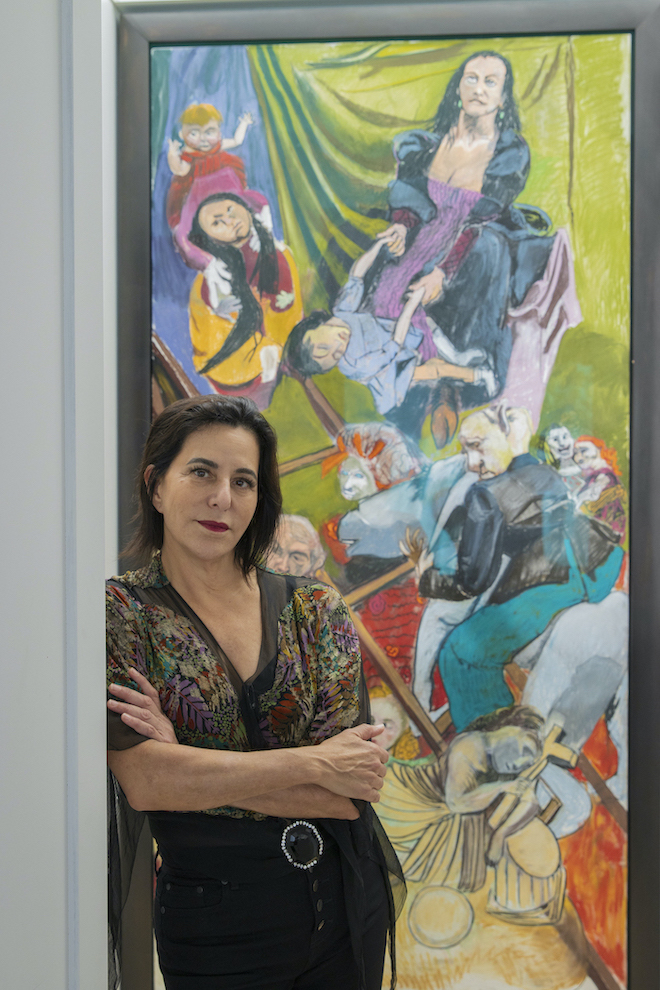
Collecting
What made you want to start collecting art? What is the main motivation behind your collecting?
I believe deep down, I am an artist myself – perhaps a frustrated one, at that.
From very early on, I enjoyed going to museums and seeing great artworks. My grandfather was a lawyer who also painted for pleasure. His paintings were amazing, and my grandparents’ home was filled with works of art from all over the world. Not necessarily “important” works; but works they loved which I find to be something I inherited – I love collecting all kinds of artists no matter where they are in their career or how popular they might be. I collect a bit of everything and having art around me throughout my upbringing definitely played a role in my starting to acquire art.
Collecting is healing for me. Coming from a big family, specifically being the oldest of five, I’ve always struggled to feel seen, and through collecting I find I can express my own feelings through finding works that speak for me. I love supporting emerging works and I love surrounding myself with works that feed my soul. I also love that it is one of the few investments one can make that can be enjoyed visually. However, I do not buy solely for investment. I won’t buy work that has peaked (in my opinion), but it is never the driving motivation for a purchase.
I’ve always had an affinity for beautiful things – I have a cousin who has owned a vintage clothing business for over 40 years. I admire craftmanship and looking at the way things were made has always been fascinating to me.
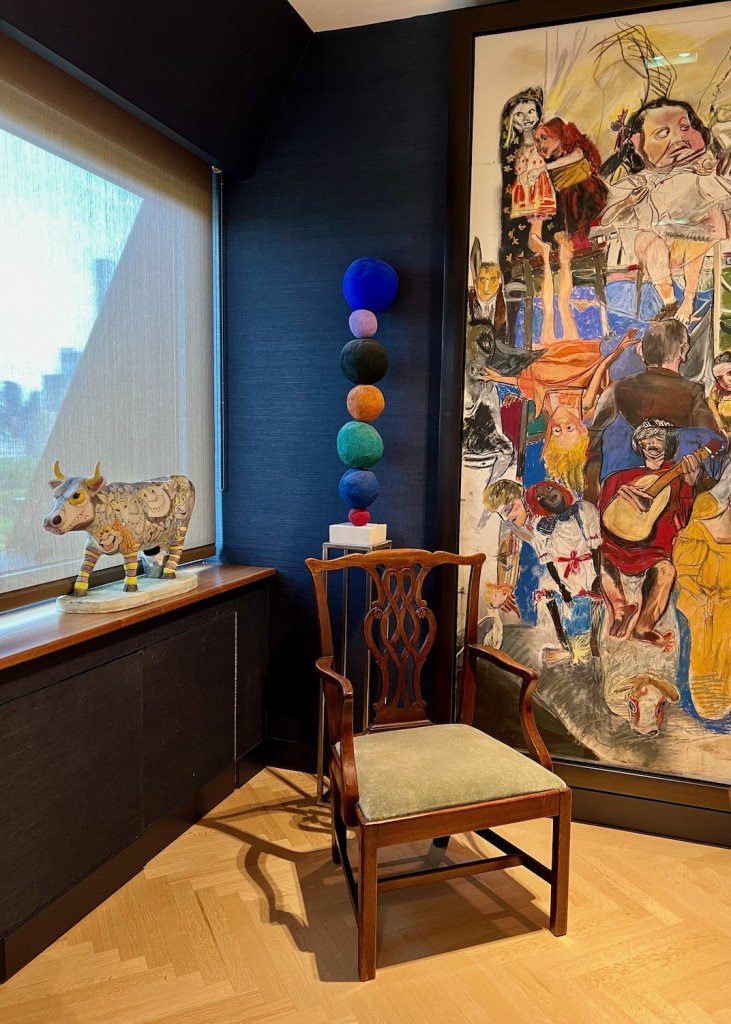
You are holding the largest collection of works by Portuguese-British artist Paula Rego. How does her art practice speak to you?
When I first saw her work, I was astounded that she had missed my radar for so long. My reaction was visceral. Everything spoke to me; from her style—her hand, the colors—to the amazing storytelling. Then when I met her, we instantly got along, and I began supplying her with vintage clothing for the “dollies” she used to create scenes for her paintings. Feeling like I was able to participate in some way and that I was sending her things that hit the nail on the head was a high for me. Her work brought me so much joy, and I felt like she knew that I could see her and that meant a great deal to me.
You are portrayed in one of Rego’s artworks. Can you tell us more the significance of this artwork in your collection, as well as in Rego’s practice?
When Paula Rego asked me what fairy tale or myth I relate to or wanted to be portrayed as, I spent a lot of time reflecting on it and thought Scheherazade was perfect. As a Persian tale that reflects my heritage, Scheherazade is a woman who used storytelling to save women’s lives. I think that speaks to Paula’s work in general, and it also speaks to something very important to me.
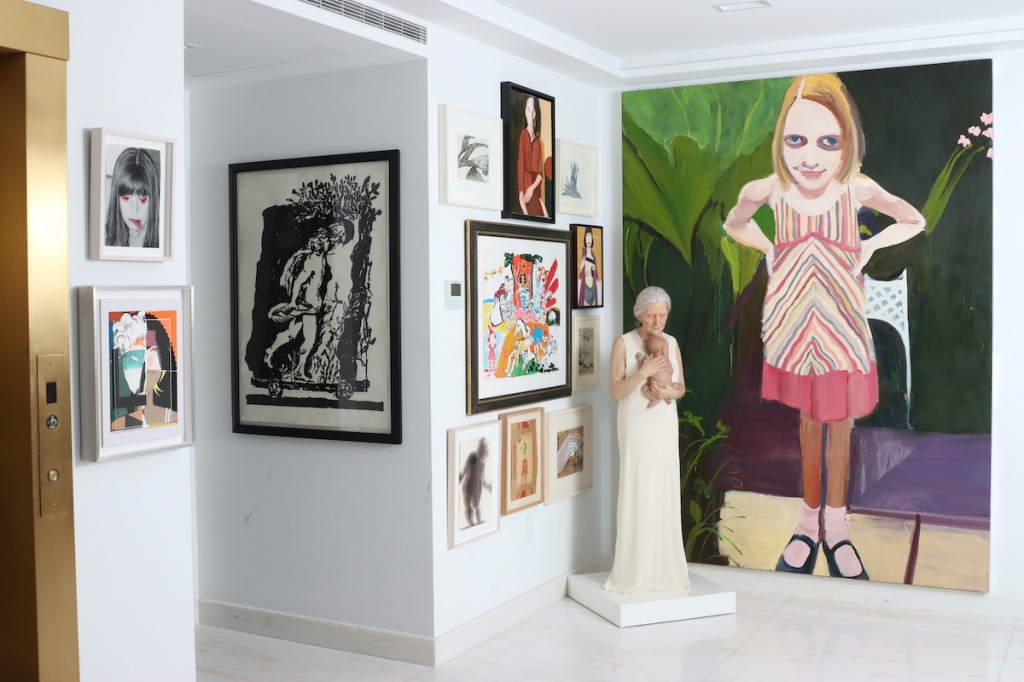
When did you fall in love with a piece of art? What was it?
The painting I first fell in love with was “The Sleeping Gypsy” by Henri Rousseau at MoMA. It was always in the same location when I used to visit with my mother as a child, and it was so exciting for me to rediscover it every time I go.
Your collection has a focus on female narratives and storytelling. Why are they important for you?
I love storytelling in all forms.
One of the things I love about storytelling work is how you can learn so much about the viewer in the way they see the artwork. I also love work where the colors and images look pretty, but when you look further, there are unsettling themes—showing that not everything is as it appears. I love to see that register on the viewer’s face when coming across new works, or when people engage with my collection.
In addition, I went through a deeply abusive relationship after my marriage, which led me to seek out artists who have also experienced abuse and used art to heal. I wanted to support their work which in turn was healing for me. I feel a strong connection to female Iranian and other Middle Eastern artists, who often tackle pronounced gender issues in their countries. Their art powerfully conveys anger, frustration, pain, and sometimes humor.
These are also works that speak to me. Perhaps growing up as a misfit made me appreciate the underdog. I feel that the arts of all kinds are one of the most impactful ways to reach people and send a message, subliminal or direct – and perhaps make a viewer think for a moment in a way they may not have thought of before.
Words are powerful but have limitations. Art, music, film, dance are extremely unique to individual creating. I love any kind of mind-opening experience, and I find that art is a beautiful way to communicate, as an artist or a collector.
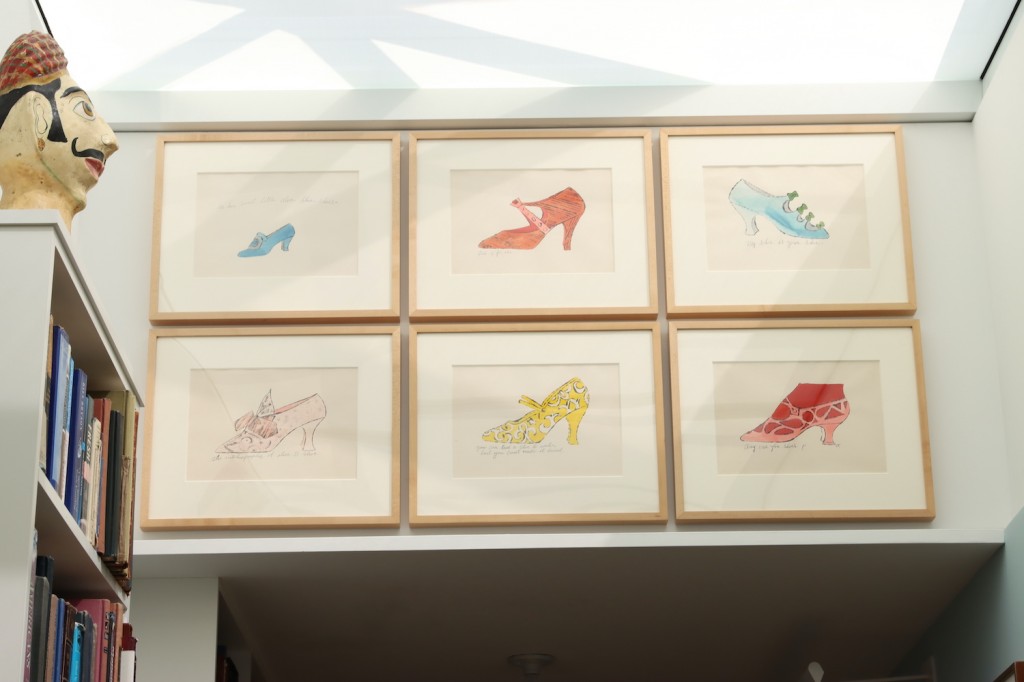
What were the first and the latest artworks you purchased?
My first purchase was a portfolio of Andy Warhol hand-painted prints – the shoe series from Susan Sheehan Gallery. It was very exciting for me but also nerve-wracking for the first time buying. Up until this day, they are still prominent in my home and bring me joy. Each has a little saying, but it is not the same kind of storytelling that I collect currently.
The latest piece I bought was a Kiki Smith sculpture “Dove” at The Armory show earlier this month. I’ve always loved her work for being wry in some ways and serious in others; as well as how unapologetic she is about her craft and personal experiences. I finally found a piece by her that feels so right for my home!
Other artworks I purchased at The Armory show were by Iraqi artist Afifa Aleiby and British artist and curator Lubaina Himid.
How many artworks do you own? Where do you display your collection?
Too many. I display all I can in my home, but I also have storage, as well as children and siblings who get to enjoy the art as well. There is always something on loan, and things move around depending on how I feel and what is going on in my life.
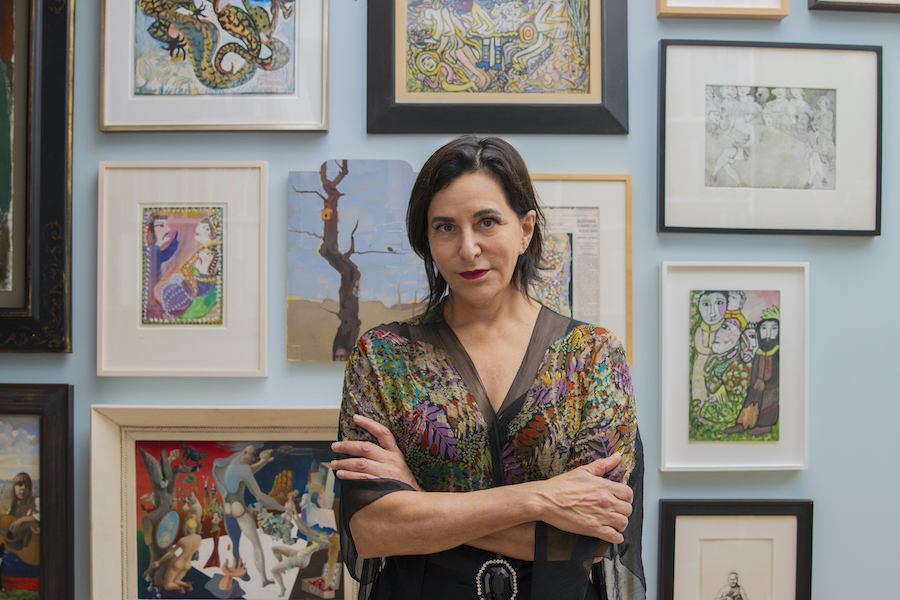
How are the experiences so far with loaning your artworks to museums and showing part of your art collection publicly?
I truly cannot understand why a collector wouldn’t want to loan an artist’s work. It’s the least you can do for the artists that bring you so much joy, and I love it when other people get access to work in private collections. It is also in a collector’s best interest. I have only had great experiences with loaning work.
I do have work that is very large and very hard to get in and out of my building. One in particular — I waited for 6 years before bringing it to my home and gave the work a chance to travel to museums worldwide. Now that it is home, I do not anticipate it leaving until the artist has shown in a major museum in New York City.
What is your most treasured artwork?
There is no way to answer that. I am deeply sentimental, so it is probably my children’s art. But there are many, if not most, works that I could never sell in my lifetime!
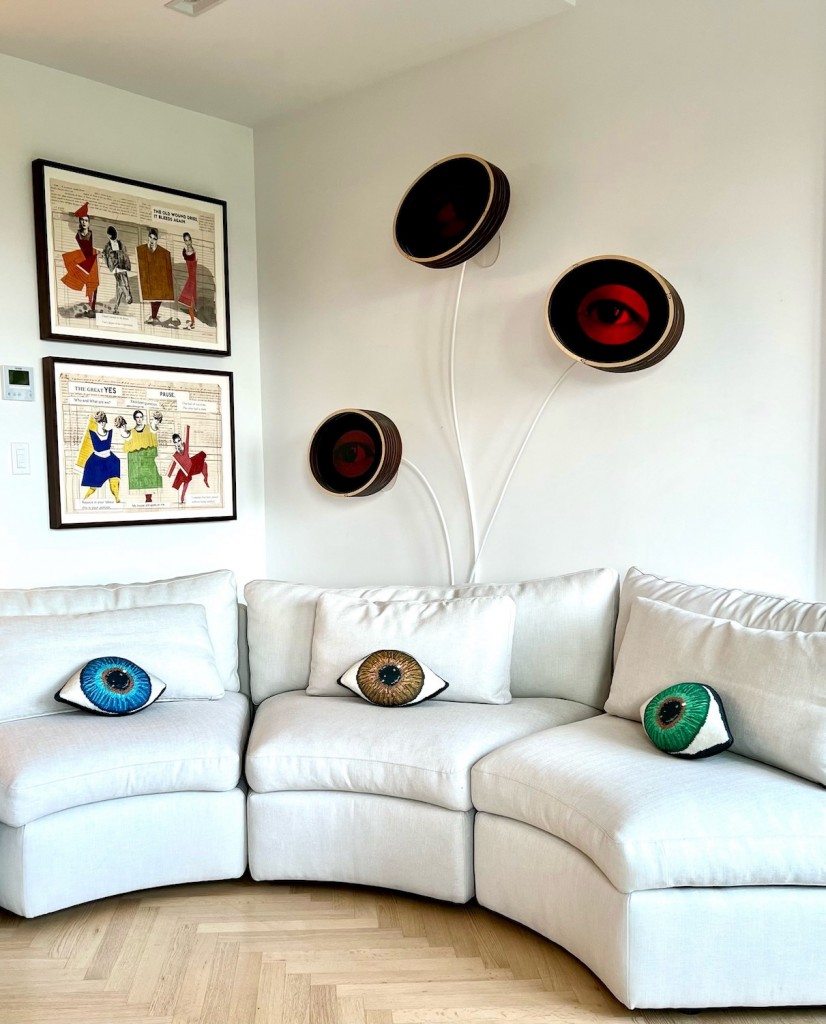
How important is it for you to meet the artists who created the artwork?
Interesting question. I understand that creating art is fundamentally what artists do, and many may dislike openings and meeting collectors – I never want to force that. However, if I were creating art, I would want to know who had my work in their homes and it would be meaningful for me to know that they cared about my work and were not just collecting for their financial gain. So yes, I love to meet the artists, but more than that, I love showing to an artist that I see him/her and that I deeply love the work.
How have your collection and your perception for art evolved throughout these decades of art collecting?
I would say that I started out much “safer” in my collecting journey versus now. It’s been over 40 years of collecting, so I have grown to trust my eye and listen to my visceral reactions to the work. I appreciate thought-provoking pieces and what others may call “difficult”; but I prefer not to have work that is too blatantly sexual in nature. I am not collecting art so much anymore, instead I am telling my story through the art I collect.
What artworks are on top of your wish list right now?
I’m looking forward to the next 12 months, including going to Art Basel Miami. As always, I’m more interested in what I don’t know yet vs. what I already know. It’s exciting to find new artists – but they don’t necessarily have to be emerging, or “new” – it could just be an artist that somehow escaped my attention.
I find it abating that an artist can be well known in some countries and not in others; as was the case with Paula Rego. I have a strong interest in learning more about work in the Middle East. There is often a story and an aesthetic that resonates for me.
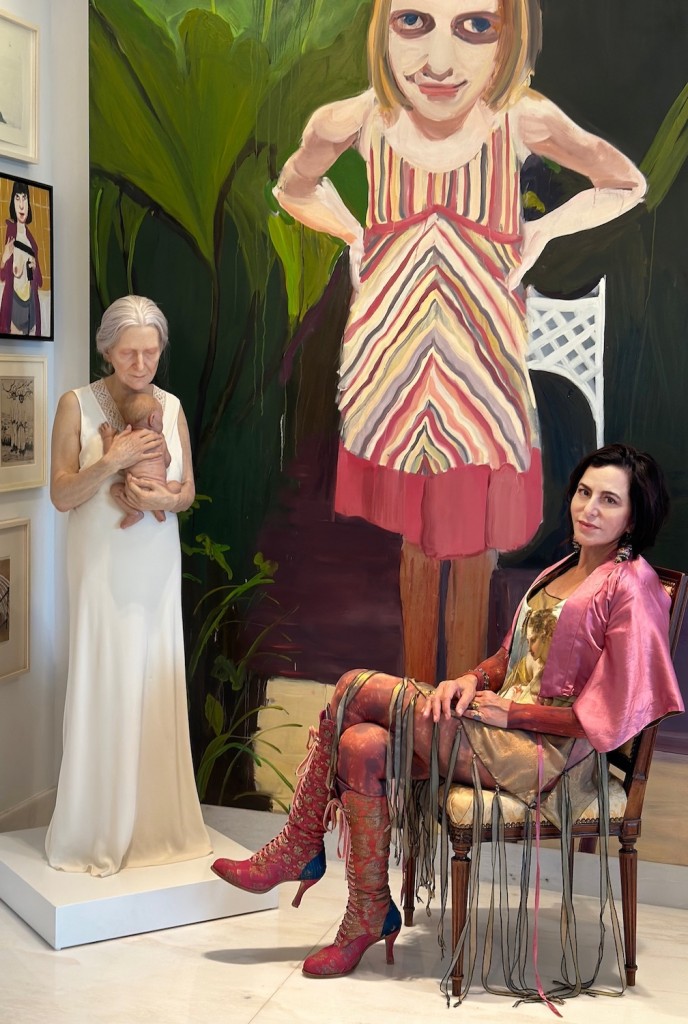
The Art World
What was your happiest moment being involved in art?
I cannot pinpoint a moment, there have been many. I have been lucky to have found some of the most grounded, wonderful people in the art world who I can now call friends. One of them is artist Dragan Strukelj, who has turned a space in my home into his studio.
What’s your art-world pet peeve?
Wow – there are so many. I hate the games, the superficial aspect, the gallerists who are transactional and don’t build relationships or work for the artists’ best interest in the way they should. Gallerists and gallery staff who are so self-important and full of themselves, pretentious people.
But, I have met some of the most wonderful people as I said. Carrie Steins, who started as my art consultant and is now a lifelong friend. Someone I trust implicitly. Frankie Rossi who connected me with Paula Rego, and I have some of the best times of my life with her; Frank Damaged, who owned Zeno X and was the most enlightened, honest gallerist I have ever encountered. Yukiko Koide, a Kyoto gallerist who cares deeply for her artists and believes in all the work she shows. The list goes on; like anything else, both sorts exist, it’s just a little harder to find in the art world.
What is your advice to young and fresh collectors?
I would say to look, look, look, look, look and develop your eye. Don’t worry so much about acquisitions at first because you should never buy what someone tells you to buy. You have to learn what you love and then trust your eye that you can see what good work looks like. I do believe there are many mediums to collect that are not all a fortune, and great finds can be found in flea markets and furniture auctions, as well as in the best galleries. Go to art schools when they have open gallery visits. It’s out there. There’s a lot of great work. Don’t follow the crowd; everyone liking something doesn’t mean it’s good.
Can you name three emerging female artists who should be on our radar?
Natalie Frank, Soheila Sokhanvari, and Jessica Maffia.
A selection of artists Kim collects:
Annie Morris
Chantal Joffe
Marina Faust
Paula Rego
Sam Jinks




